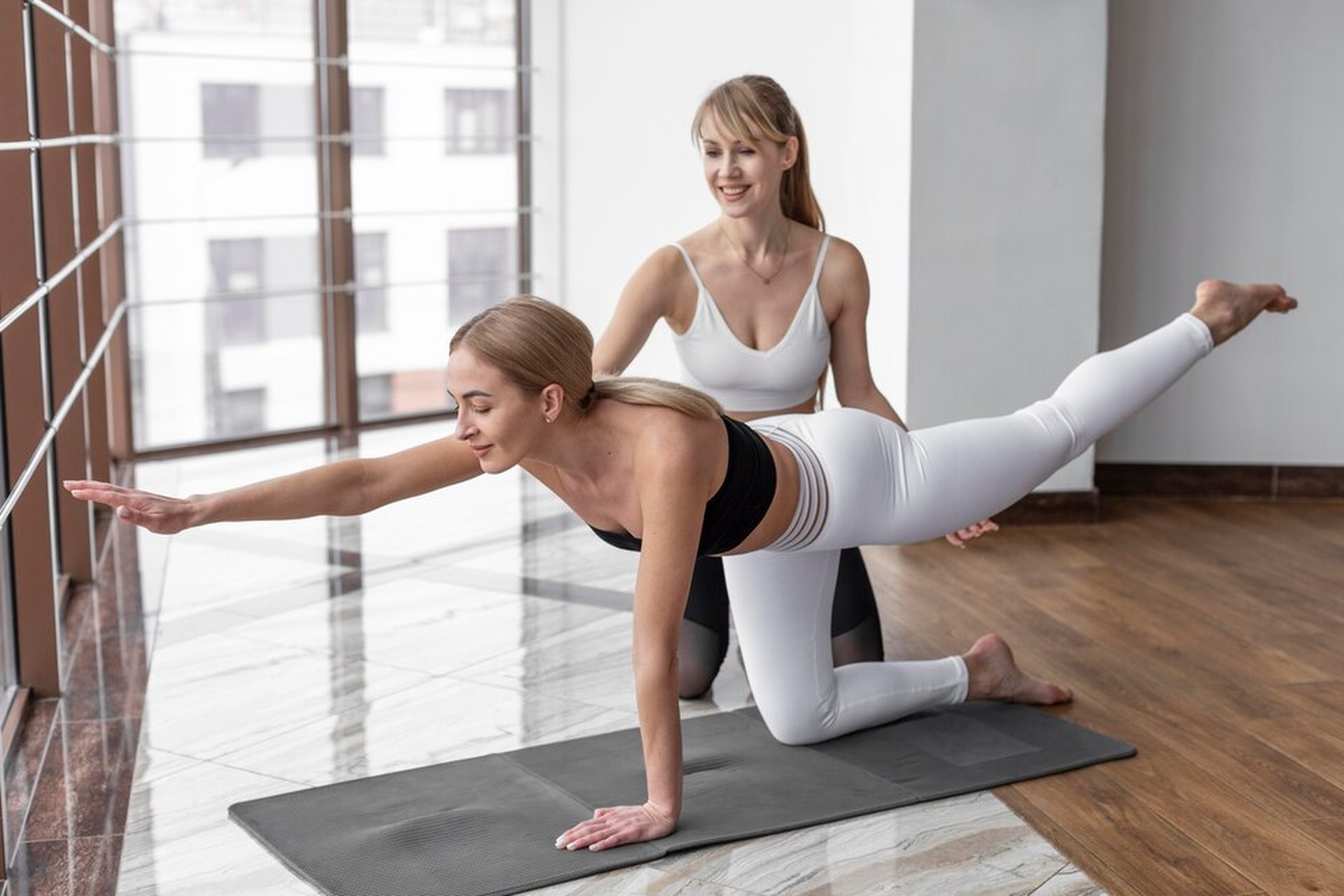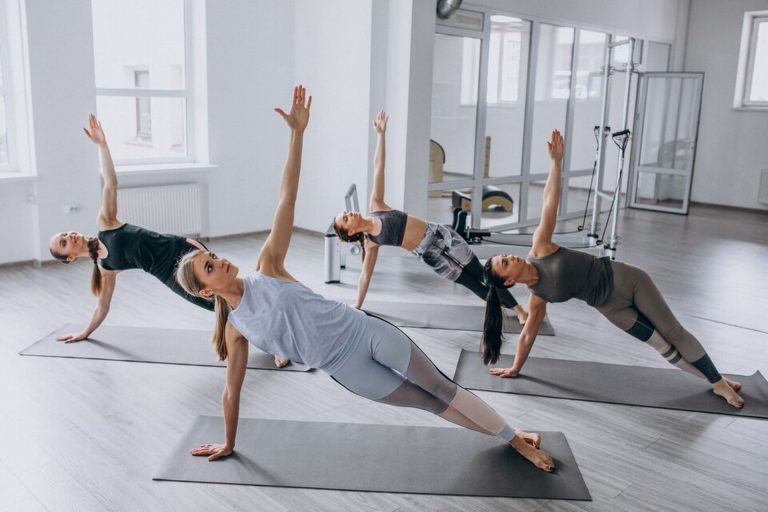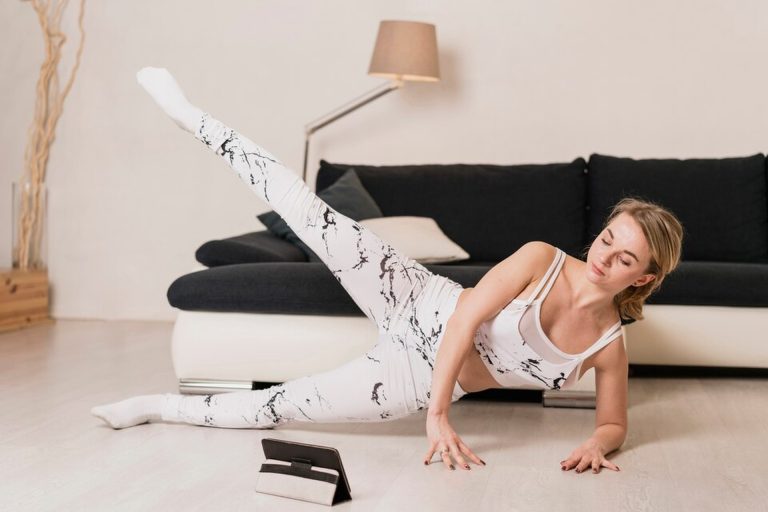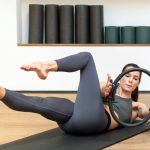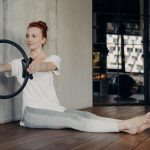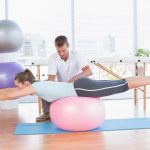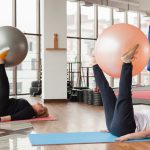Many people have back pain in life, and scientists say over eighty out of a hundred people get it in time. It is mostly because of sitting jobs and not enough exercise, which can make your posture go wrong and hurt your back. With mobile phone screen habits and not moving enough all day, your spine gets weak and hurt.
Pilates is like a magic science exercise, but it is calm and slow. Not heavy workouts. It helps your core and spine get strong and stand up nice and tall. Research scientists say Pilates can reduce pain in the back and help better posture if done regularly.
What Causes Poor Posture And Back Pain In Modern Life
Sedentary Lifestyles And Muscle Imbalances
Sitting too long every day makes your hips become tight and the glutes become sleepy, lazy muscles. Then the pelvis goes tilt and that makes your lower back get pain slowly over days.
People who work at a desk or computer for a job site for many hours, and their body muscles get imbalanced. The belly muscles don’t help anymore, and the back gets pressure.
The Role Of The Spine And Core Stability
The spine is like the tree in your body, and strong roots means core muscles. Without that support, the back muscles try too hard and get tired and hurt.
If your posture is not good, then your core is not helping your spine to stand properly, so other small muscles feel pain all day.
Stress And Muscle Tension
Stress causes tight shoulders and stiff necks. Then slowly your head moves forward, and then your upper back goes round and bends.
Muscles always get tensed from thinking too much or poor sleep habits, which can cause more back discomfort. It is like a circle problem.
One study from a journal called Occupational Medicine said workers who sit six hours or more daily get more back hurting and also their posture goes very bad. That is why not moving during the work day is a big problem that makes the spine weak and bad posture.
Try to know what kind of posture you keep during work time and check if you tilt or hunch. Then start to fix slowly with pilates and moving exercises.
How Pilates Targets The Root Causes Of Back Pain
Core Strengthening And Spinal Alignment
Pilates is special to make your inner belly muscles get strong and helps balance your spine like a straight stick. That muscle called the transverse abdominis helps you stand without much effort.
Each Pilates workout trains you to pull your core inside and keep your back in a good line, not curvy or too bent.
Flexibility And Controlled Movement
Pilates also stretches the tight places like the hamstrings, which pull back downward and cause pain. Also, it makes the back extensors unlock like stiff rubber bands.
If you move controlled and slow, it helps the brain and muscles to work together and stop making the posture bad.
Body Awareness And Mind-muscle Connection
Pilates helps you think about where your body is and how you are moving it. That is called body awareness or proprioception in big words.
When that improves, then you slowly change from bad sitting or standing without even trying. You feel when your back is wrong fast.
In two thousand twenty, the Journal of Bodywork and Movement Therapies said people who did pilates for eight weeks had less low-back pain and were also better at keeping their spine straight.
So do not think Pilates is only for fitness, it is also for fixing posture issues you do without knowing each day.
Scientific Evidence Supporting Pilates For Back Health
Clinical Studies And Outcomes
Many, many studies say Pilates makes a real change in the pain scale. People feel less hurting and can move more freely with less struggle.
They also start doing more activities like walking and cleaning at home without feeling much pain in their back.
Comparison To Other Treatments
Pilates works better than just the gym or even a massage sometimes. Because Pilates aims at deep muscles and also posture, so impact stays longer.
Others, like a chiropractor, help for a short time, but the pain comes back when the posture is not corrected well.
Neuromuscular Benefits
Pilates also helps the brain tell muscles how to move in new, good ways. That is called neuromuscular reeducation, say science.
It trains the body to sit and stand in better shape and movement patterns, so you do not keep hurting the same way every day.
In two thousand fifteen big research analyses in Archives of Physical Medicine and Rehabilitation found Pilates reduces pain and makes life better for back pain.
So better to do pilates as a long-term fixing, not just 1 or 2 one-time exercise trials.
Top 5 Pilates Exercises for Enhancing Posture and Alleviating Back Pain
Pelvic Curl
This starts lying on the floor. It makes the core tight and lifts back up smooth, which makes the whole spine feel longer.
Spine Stretch Forward
You sit and bend the forward spine a little slowly. It makes the back more flexible and straightens it from top to bottom.
Swimming
It feels like flying on your belly. This move makes the upper and lower back strong like steel and keeps the body balance.
Single Leg Stretch
This movement is for the belly muscles and keeps the pelvis stable. Helps in aligning the lower spine, too.
The Saw
You sit and twist your side and reach. It opens the tight upper back muscles and stretches the spine fully.
These moves may look simple, but have a big impact in real life. They make the spine feel smooth and muscles support better posture if you do it regularly. Even if a new person tries once a day, it makes a big change. You can see the difference in one or two weeks.
Key Principles Of Pilates That Support Posture Correction
Centring And Core Engagement
All Pilates starts with the centre. The core is the centre part. You need to pull it inside first, or the exercise is not working properly.
Core helps your back stay straight and stops too much load on the spine, so pain does not come back.
Precision And Alignment
Every move in pilates must be slow and exact, not hurried. That keeps joints in good line shape.
Practice like this helps you fix neck forward or tilt pelvis, which are common posture mistakes.
Breath And Rhythm
In Pilates, breathing is part of the move. You must breathe correctly and slowly, then only performance improves.
It relaxes the body and muscles, making them less tight, so the back feels more comfort.
Even Joseph Pilates, who made this system, said that movement control is important, and breathing with it makes results stronger. He talks a lot about control with the feel of movement, not just exercises.
Use these thoughts not only while exercising but also when standing, walking, or using the phone. Body habits change faster in that way.
Common Postural Issues Pilates Can Improve
Forward Head Posture
Pilates fixes neck muscles and upper back to pull the head back over the shoulders in a good line.
Rounded Shoulders
It stretches the front chest and strengthens the back shoulder blades to go back to the centre line.
Anterior Pelvic Tilt
By making belly and butt muscles better this tilt problem gets stopped and the spine relaxes.
Sway Back
Helps put a proper S shape curve on the spine and stops over-bending of the lower back bones.
Flat Back
It makes the spine more flexible with a proper curve instead of a stiff, straight posture which is also bad posture.
All these wrong postures look different, but are mostly caused by a weak core and tight muscles. Pilates solves the roots. Your spine feels free when strong and well-balanced.
How To Integrate Pilates Into Your Routine And Stay Consistent
Starting Small And Prioritising Form
Do not start too much too fast. You should learn slowly and get good with form first.
Choosing The Right Format (Mat vs Reformer)
Mat Pilates is basic and easy. Reformers need tools and help to overcome more resistance and push deeper.
Building A Sustainable Practice
You don’t need it daily. Do it two or three times a week. Track progress by journal or mirror posture.
A beginner who did a twenty-minute mat exercise three days weekly felt less back stiffness and posture stood nicely after some weeks.
Make a fixed timing and choose the easy level class. Do regularly improve slowly and steadily. This makes injury happen, and the body feels happy with the routine.
Conclusion
Pilates is not just a simple stretch thing; it is a total spine guard from pain and posture damage. It fixes the core and also the brain to move better.
As more people sit for life jobs and play less, their body gets hunched, and back pain becomes a daily problem. Pilates is easy to do and works for all people.
Start with ten to fifteen-minute moves. Learn with a teacher or a video, and keep doing it every week. Better posture will arrive, and your back will say big thanks.

